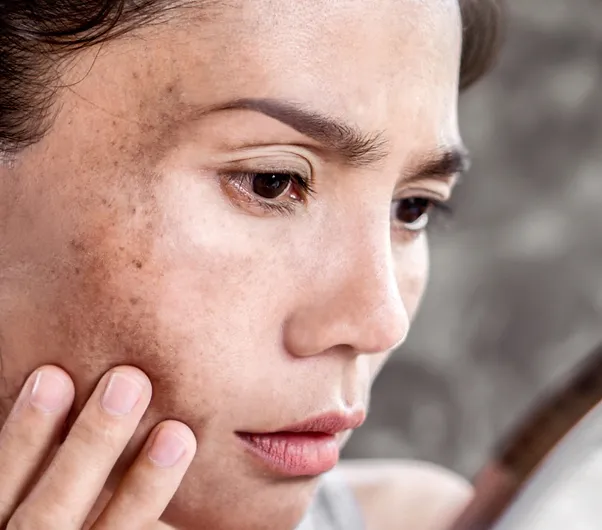Melasma, is a skin condition in which progressive brown pigmented patches appear on the face, mainly on the cheeks, forehead and upper lip. This condition primarily affects women and is triggered by several factors, including genetic and hormonal factors. It is also called the ‘pregnancy mask’, even though most often not related to pregnancy. Melasma is induced by UV exposure and sometimes even by skin exposure to daylight (blue light). It is a chronic recurrent condition that flares up regularly, so a longterm strategy is to be considered.
Post Inflammatory Hyperpigmentation or PIH is the residual brown pigmentations that is formed in the healing phase after skin inflammation or during wound healing, like after acne, traumatic wounds or burns. Dark photo types are more prone to PIH. PIH can disappear spontaneously but usually takes several months or years.
Treatment of melasma and PIH is similar and needs to be more cautious compared to other brown pigmentation on the skin (like freckles or age spots).
The treatment initially consists of daily sun protection with high SPF, and in some cases with blue light protection filter. This is essential as without adequate UV protection, all treatments will fail.
The next step is a medical treatment with pills or with cream based on hydroquinone (HQ) (triple cream or Kligman formula); only to be used for 2-3 months. Alternatively or consecutively we recommend skincare products with non-HQ depigmenting agents like azelaic acid, kojic acid, arbutin, niacinamide, tranexamic acid, and vitamin C.
Further treatment options for melasma include chemical peels, Spectra laser toning, carbon laser peel and LaseMD Ultra in combination with the use of TA (a powerful topical depigmenting serum) or with vitamin C (a skin brightening antioxidant).
